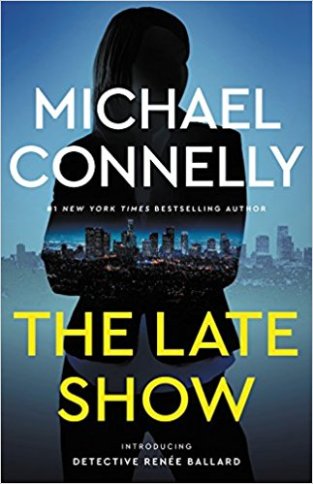
Renée Ballard is a good detective stuck working a terrible shift. After filing a couple of sexual harassment charges against her former boss, Lt. Robert Olivas, Ballard was moved to the midnight shift–otherwise known as the Late Show–when her partner refused to back up her statement.
Aside from being angry that her partner didn’t have her back, Ballard’s biggest issue with her new shift is that come morning, she and her partner, Jenkins, are forced to turn everything over to the day shift crew. While Jenkins is fine with the way things work, content to get out each morning and head home to his wife, Ballard misses doing real detective work and seeing a case all the way through.
After a long shift one night, Renée reaches her breaking point and decides that she can’t give up either of her new cases, opting instead to pursue both–even if she’s not technically supposed to.
The first case involves a transsexual woman who was nearly beaten to death outside of a club. After arriving at the hospital, the woman tells police officers that the man who beat her lives in an “upside-down” house, then loses consciousness–leaving Ballard in the dark on her own to figure out the rest of the story, which she pursues with relentless drive and energy.
The second case involves a mass shooting at a club called The Dancers that resulted in five deaths. One of the victims, a young waitress, was transported to the hospital while Ballard was still there investigating the assault case, but died shortly after her arrival.
The waitress is considered a peripheral victim by the lead detectives and not necessarily critical to understanding the shooter’s motives. Ballard disagrees, though, and quickly finds reasons to believe that the woman may be more important to the investigation than everyone else realizes–but is blown off by her superiors who are convinced the waitress was little more than an unlucky bystander.
It doesn’t help that Robert Olivas is heading up the Dancers shooting, creating a near-impossible situation for Ballard. But rather than back down, she plays lone wolf and digs deeper into the case, following every lead, no matter how small.
While comparisons to Harry Bosch (the lead character in twenty-one of Connelly’s novels and star of the Amazon-produced television show, Bosch) are inevitable, Ballard is a fresh and unique new character with her own strengths and weaknesses.
The biggest thing Connelly’s two protagonists have in common is that like Bosch, Ballard is forced to tip-toe her way around internal police politics as she pursues justice for the victims she serves. Beyond that, don’t expect too many similarities between the characters (though longtime fans will be thrilled to see that Bosch is referenced similarly to the way Connelly mentioned Matthew McConaughey in 2015’s The Crossing).
Connelly tells the story in his typical style, following Ballard around from beginning to end rather than switching point of views and shadowing other characters. He also continues to integrate realistic police investigative tools and forensic science into his stories better than anyone else currently writing in the genre, once again creating an authentic reading experience that’s as entertaining as it is informative.
Renée Ballard is a smart, strong, and capable new lead character. Connelly’s legion of fans will instantly love her and enjoy the new perspective she brings to the world of cops vs. evil that Connelly has skillfully written about for several decades.
New character, same outcome. Michael Connelly delivers an unputdownable hit with The Late Show, proving once again that he’s far and away the best crime novelist on the planet.
Book Details
Author: Michael Connelly
Series: Renée Ballard #1
Pages: 448 (Hardcover)
ISBN: 0316225983
Publisher: Little, Brown and Company
Release Date: July 18, 2017
Book Spy Rating: 8.5/10
Order Now!
